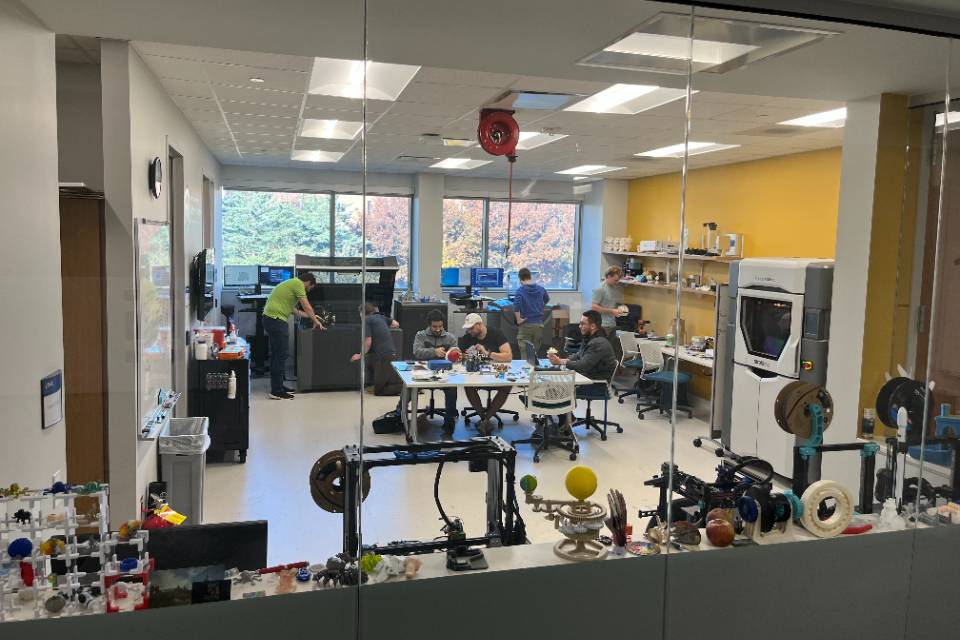SLU Center for Additive Manufacturing
Established in 2019 through a competitive grant from the Saint Louis University Research Institute, SLU-CAM is a resource for 3D printing, computer-aided design and related activities, available to faculty, students and the community at large.
The center houses two state-of-the-art industrial 3D printers; an FDM printer capable of printing a wide variety of materials; and a polyjet printer, capable of printing different colors and durometers within the same object. The center has other 3D printers and laser cutters as well. Customers can bring in a CAD file ready to print or a simple sketch that the center can develop into a printable object. The center is in the new Interdisciplinary Science and Engineering Building on SLU’s North Campus. Our goal is to, through our 3D-printing expertise and resources, support research, education and interdisciplinary collaboration at SLU, and within the St. Louis community.
Research Institute Grant
The grant that established SLU-CAM came from the Saint Louis University Research Institute, which was founded in 2018 from a historic $50 million gift from Dr. Jeanne and Mr. Rex Sinquefield.
Learn More About the Research Institute Grant
Our Technology
Saint Louis University's Center for Additive Manufacturing, or SLU-CAM, is a 1,000-square-foot facility housed in the new Interdisciplinary Science and Engineering Building (Room 204). The mission of the center is to connect students, researchers, and the community with expertise and resources in additive manufacturing.
Learn More About Our Technology
Our Team
 Andrew F. Hall, D.Sc.
Andrew F. Hall, D.Sc.
Co-founder and Director, SLU-CAM
Associate Professor Emeritus, Biomedical Engineering
andy.hall@slu.edu
View Full Profile
 Michael Borovik
Michael Borovik
Lead Engineer, SLU-CAM
michael.borovik@slu.edu
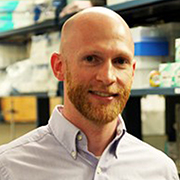
Scott Sell, Ph.D.
Co-founder, SLU-CAM
Professor, Biomedical Engineering
Associate Dean for Undergraduate Education, School of Science and Engineering
scott.sell@slu.edu
View Full Profile
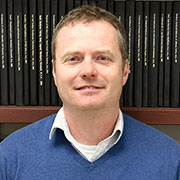
Scott Martin, Ph.D.
Co-founder, SLU-CAM
Professor, Chemistry
Associate Dean, School of Science and Engineering
scott.martin@slu.edu
View Full Profile
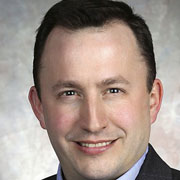 Vince Anewenter
Vince Anewenter
Vince holds a Bachelor of Science in Business Finance from Milwaukee School of Engineering's Raider School of Business and is a journeyman toolmaker. He is the director of the Rapid Prototyping Consortium at the Milwaukee School of Engineering where he has been actively involved in the additive-manufacturing industry since 2004. As director, Anewenter provides strategic additive-manufacturing guidance and new product development expertise to a noncompete consortium of over 45 companies located throughout the world. Areas of expertise include: additive manufacturing, 3D scanning, injection molding, stamping, castings and product design.
Learn More About Vince Anewenter

Michael Hayes
Michael Hayes is a member of the ADDvisor® Services team for The Barnes Global Advisors, a leader in advanced manufacturing consulting and services. Prior to that, Mike spent 34+ years with McDonnell Douglas/Boeing in Structural Design and Additive Manufacturing. For the past two decades, he technically and strategically led the implementation of polymer AM from rapid prototyping into aerospace production through the engineering of material and process developments, requirement definitions, application selections, qualifications, testing, certifications, and technology transitions. Mike has a Bachelor of Science in Aerospace Engineering and a Master of Science in Mechanical Engineering, both from Missouri University of Science and Technology.
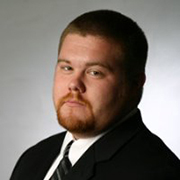
Mike Hill
Mike is the founder and president of Hill Innovative Solutions, LLC. He has a bachelor’s degree in physics from Knox College, and an Executive MBA from Washington University's Olin School of Business. Hill's extensive experience in design, development and manufacturing includes over 200 different products in multiple industries including aerospace, respiratory protection, medical devices, sporting goods, consumer products, industrial equipment and power electronics. In his leadership of manufacturing, services, and maker space organizations he has incorporated “lean” and “continual improvement” manufacturing principles through MVP development, inventory control, reduced lead times and employee engagement.
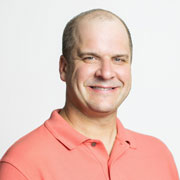
Brandon Wegge
Formerly at Boeing, Brandon served in many additive manufacturing roles including director of external relations and chief engineer. Previous roles include chief engineer of Navy sustainment, and A-10 wing replacement IPT leader. Brandon continues to serve as a City of Brentwood alderman and as a volunteer in the community. He received his bachelor’s degree in mechanical and aerospace engineering from Princeton University, master’s in mechanical engineering from Washington University, and an MBA from Saint Louis University. He is an associate fellow of AIAA.
Research Articles
Castiaux, A. D.; Currens, E. R.; Martin, R. S., Direct embedding and versatile placement of electrodes in 3D printed microfluidic-devices. Analyst 2020, 145 (9), 3274-3282. doi:10.1039/d0an00240b
Hayter, E. A.; Castiaux, A. D.; Martin, R. S., 3D-printed microfluidic device with in-line amperometric detection that also enables multi-modal detection. Analytical Methods 2020, 12 (15), 2046-2051. doi:10.1039/d0ay00368a
Hamedani, B.A., Melvin, A., Vaheesan, K., Gadani, S., Pereira, K. and Hall, A.F. (2018), Three‐dimensional printing CT‐derived objects with controllable radiopacity. J Appl Clin Med Phys, 19: 317-328. doi:10.1002/acm2.12278
Hixon KR, Melvin AM, Lin AY, Hall AF, Sell SA. Cryogel scaffolds from patient-specific 3D-printed molds for personalized tissue-engineered bone regeneration in pediatric cleft-craniofacial defects. Journal of Biomaterials Applications. 2017;32(5):598-611. doi:10.1177/0885328217734824
De la Lastra AA, Hixon KR, Aryan L, Banks AN, Lin AY, Hall AF, Sell SA. Tissue Engineering Scaffolds Fabricated in Dissolvable 3D-Printed Molds for Patient-Specific Craniofacial Bone Regeneration. Journal of Functional Biomaterials. 2018; 9(3):46.
